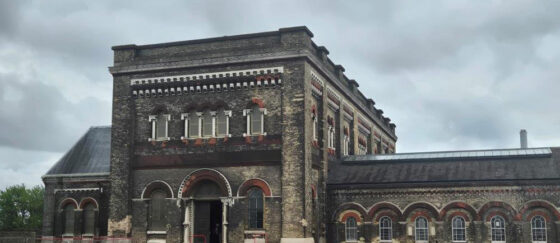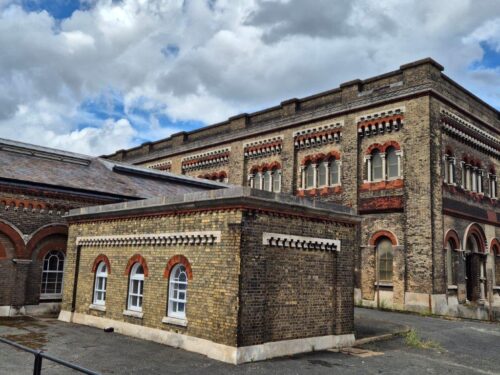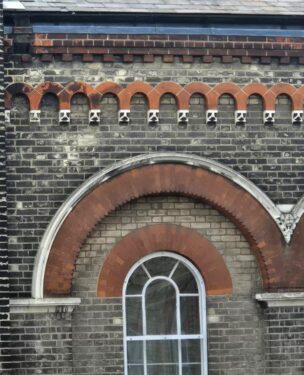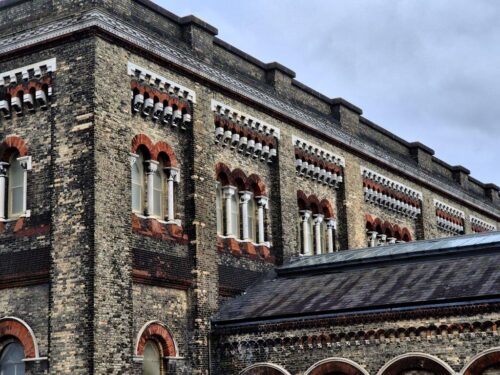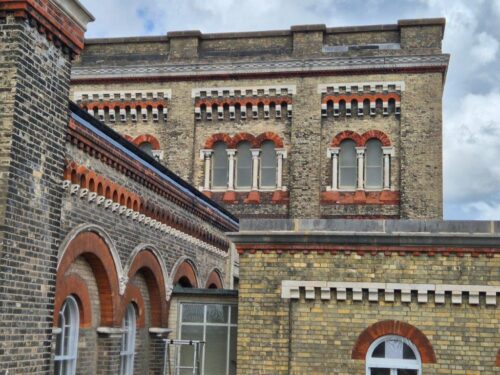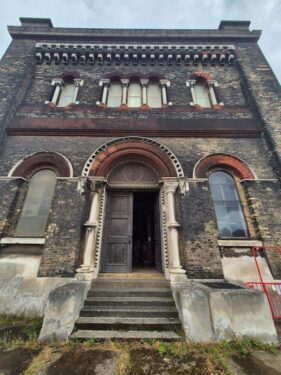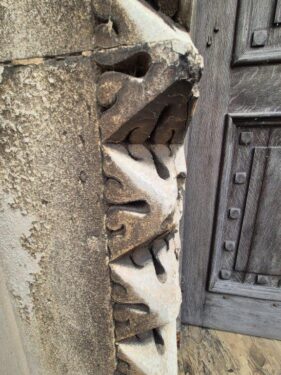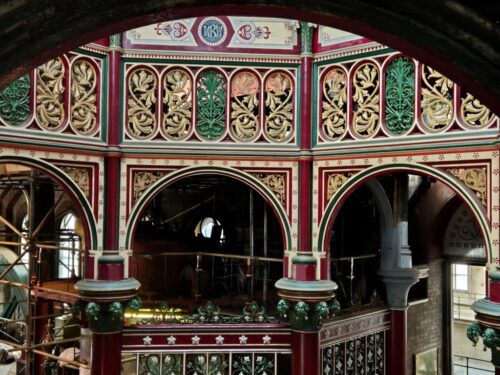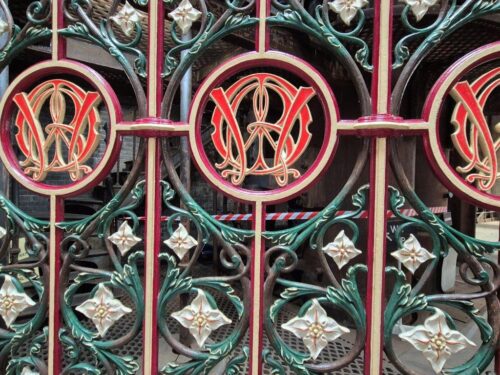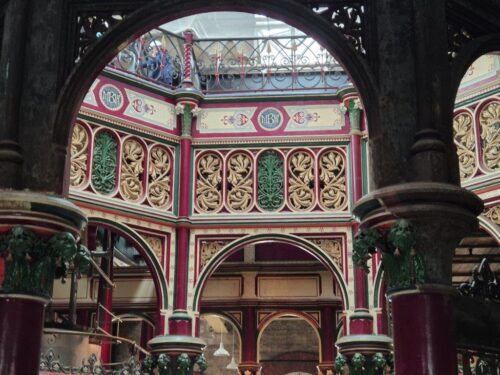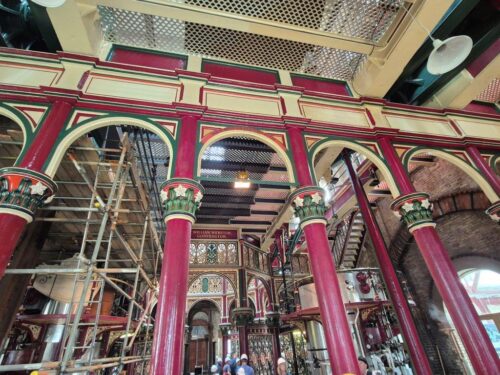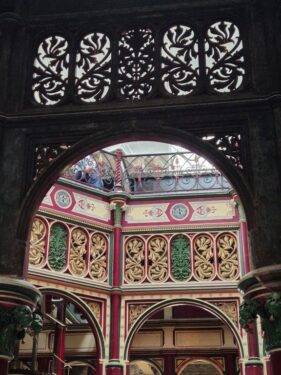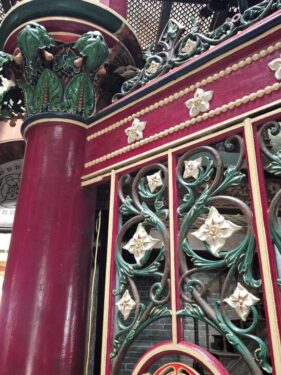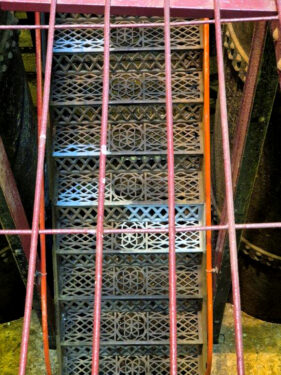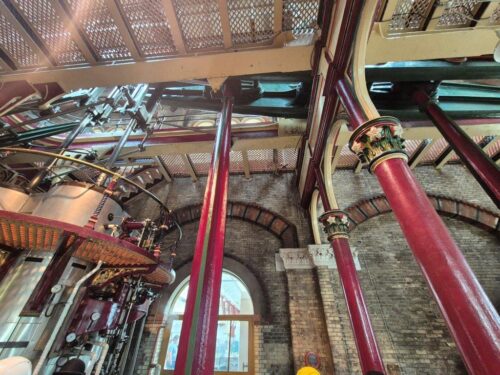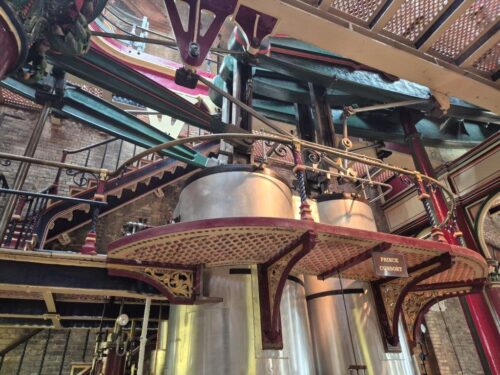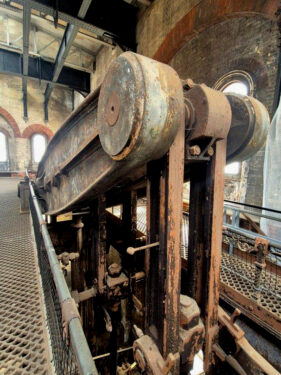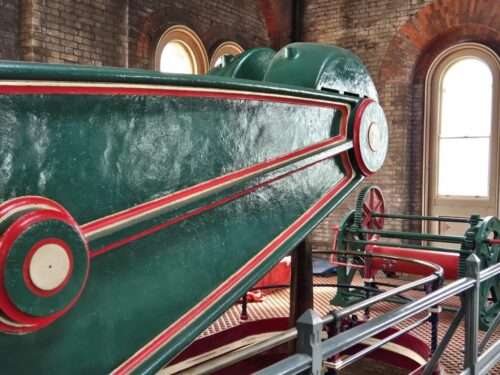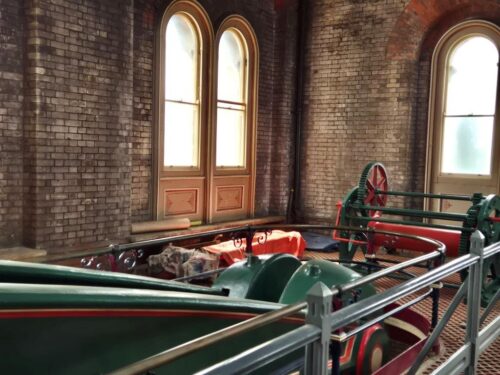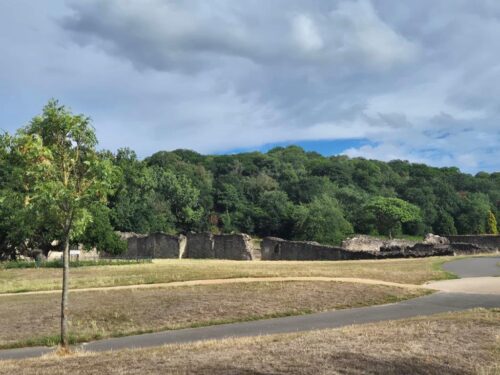Crossness Pumping Station is a key part of the sewage treatment system designed by Joseph Bazalgette in the mid-19th century to try and ensure that London never again suffered from a ‘Great Stink’ from untreated sewage pouring into the Thames, as it did most famously in 1858.
The components of this system have stood the test of time, delivering the capacity needed until the construction of the Thames Tideway tunnel, opened and completed in 2025, although not without controversy, given its cost, and missed opportunity to manage combined rainwater/sewage flows sustainably, by opening lost rivers and retaining and enhancing water-absorbing greenspaces.
Bazalgette’s system included an extensive system of street sewers, with two intercepting outfall sewers, one each side of the river, reaching pumping stations at Beckton (north) and Crossness (south), which lifted the sewage for gravity discharge into the Thames. Of course times changed and sewage treatment works were retrofitted at each of the pumping locations, and now Beckton is claimed to be the biggest treatment works in Europe.
Those who delivered public works in the Victorian era were clearly not afraid to spend a little more money to raise the utilitarian to a thing of beauty. We have seen Abbey Mills Pumping Station from a distance in the past in the middle of the vast Beckton works, been fascinated but never had the chance to visit, so when we discovered the open days at Crossness, including ‘steaming days’ when the giant pumps would be in motion, we just had to go!
Crossness Pumping Station, on those special days, is approached on a vintage (rattly!) Routemaster bus from Abbey Wood rail station, thence a narrow-gauge railway out to the Pumping Station itself, the air laced with a reminder from the modern sewage treatment plant of its past purpose.
From the outside, the station seems so much more ornate than the 20th century public utilities we are used to …
… but then you get inside, and are greeted with a riot of colour and ironwork. Closed in 1956, the building has been substantially restored, and opened to the public on special days since 2016. And the restoration lives up to Pevsner’s description: “a masterpiece of engineering – a Victorian cathedral of ironwork”.
At the heart of the pumping station were four (others were added later) huge steam-driven pumps, raising sewage by 9 to 12 metres, 6 tonnes being lifted by each stroke (11 per minute) of each engine into a high-level holding reservoir to be discharged on an ebbing tide.
The pumps are in various stages of restoration but one was operating on our visit, thrillingly so even for one like me who is definitely not of the ‘cloth cap, smell of the grease, covered in soot’ fraternity!
And the unrestored, rust-laden sections are engagingly artistic and worth the visit in themselves.
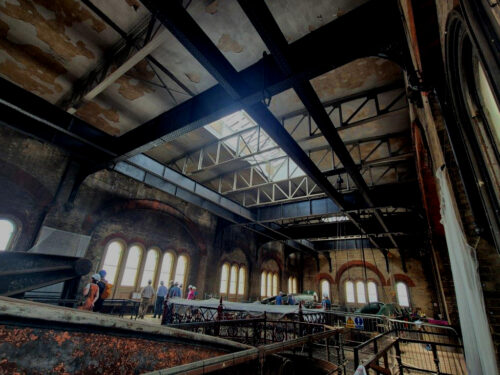
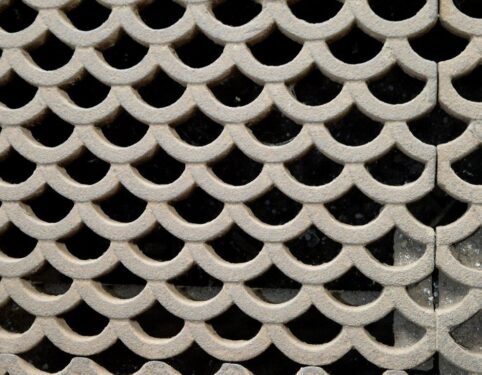

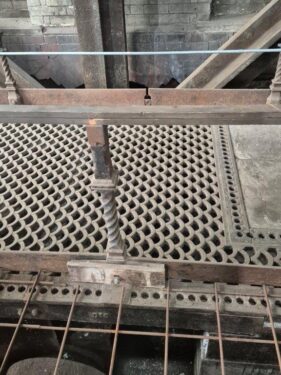
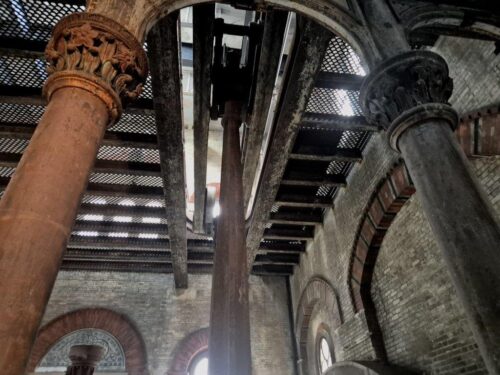
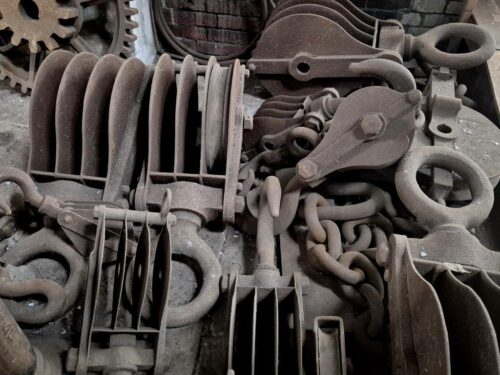
Apparently, nature on the adjacent Erith marshes is good, but not for today with some torrential downpours. So the only wildlife of note was the remarkably abundant fruiting of Wild Plums, the fallen fruit forming into unusual groundscapes.
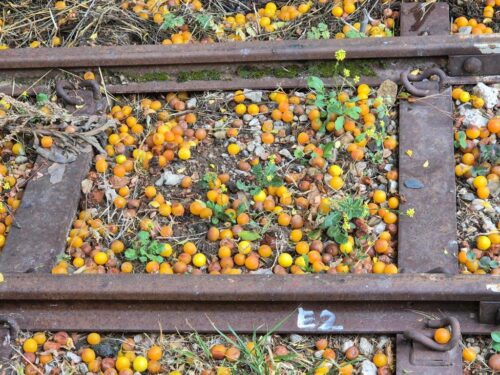
Then it was back on the bus to Abbey Wood, into the Abbey Arms for one of the best Sunday roasts (pork belly) I have ever had the pleasure to consume.
Afterwards we still had a while before our train, and the sharp showers had blown through, so we took a walk to Lesnes Abbey, an interesting area and one we felt merited a longer visit some time.
So, a fascinating day out, an one which fulfilled its primary aim of taking our minds off what was to come, my major vascular abdominal surgery just five days hence!
Well that is now in the past. Recovery continues and thanks to our wonderful NHS all went swimmingly, from initial diagnosis to surveillance to a plan of action, with delivery of the repair within three months from action being triggered. A week ago right now I was under the knife. Six days later I walked out of Colchester General with a stapled tummy and new plastic abdominal aorta, looking forward to the next 65 years. And nothing but fulsome praise for our NHS and its rainbow of wonderful staff #♥theNHS: I just hope other countries who have provided staff have the trained staff for their own needs as well…
